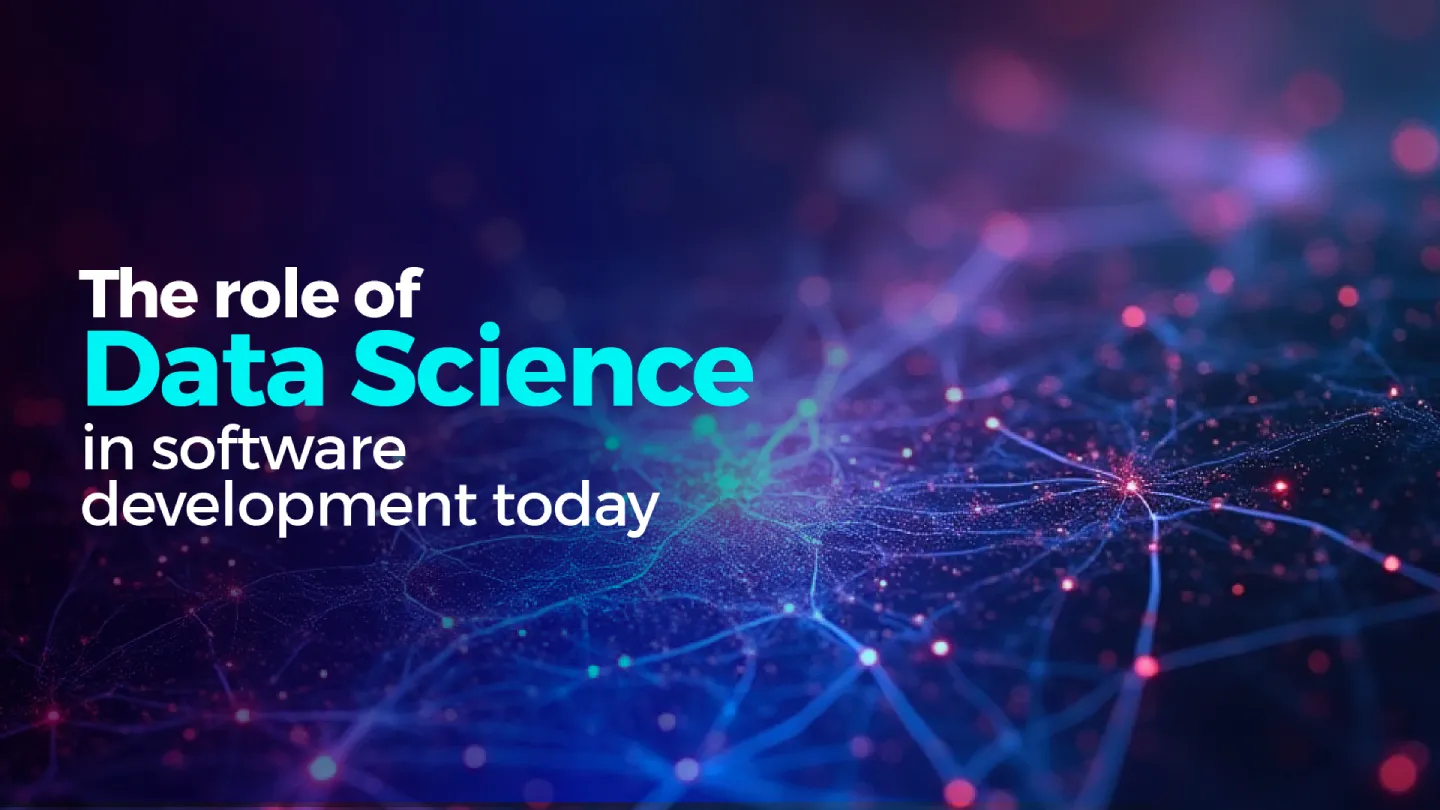Data Science has become a cornerstone of modern software development, driving a profound transformation in how applications are designed, implemented, and maintained.
Today, it’s estimated there are around 181 zettabytes of data globally. In an environment where the amount of information generated is growing exponentially, the ability to extract value from this information is key to innovation and business competitiveness.
How Does Data Science Influence Software Development?
Data Science brings a data-driven approach that allows developers to create smarter, more adaptive, and more efficient applications. Thanks to advanced analytical techniques, predictive modeling, and machine learning, software can anticipate behaviors, automate decisions, and personalize user experiences.
Unlike traditional development, where logic relies on static rules, Data Science-powered software continuously adapts to new conditions and data, improving its performance and relevance over time.
On e-commerce platforms, recommendation systems use machine learning algorithms to suggest products based on user behavior, increasing sales and satisfaction.
Key Components in Integrating Data Science and Software Development
For Data Science to deliver real value in development, it’s necessary to integrate several structural elements:
Automation through AutoML and MLOps
These tools help accelerate the creation, training, and deployment of machine learning models, standardizing processes that were previously manual and complex. This reduces development time and facilitates collaboration between data and software teams.
Robust Data Infrastructure
Data lakes and data engineering platforms provide scalable and flexible storage for large volumes of data, essential for feeding AI models and advanced analytics.
Explainable Artificial Intelligence (XAI)
To build trust and comply with regulations, developers are incorporating techniques that make automated decisions transparent, allowing for audits and mitigating biases.
Edge Computing and TinyML
Processing data near the source, on IoT devices or sensors, allows for real-time responses and reduces cloud dependence, which is vital for critical applications like autonomous vehicles or industrial systems.
The impact of edge computing is that by reducing the distance between the information’s source and where it’s processed, latency is minimized, processing is faster, and it becomes much more efficient—something that’s crucial, especially in applications focused on real-time responses.
Competitive Advantages Data Science Brings to Software
Incorporating Data Science into software development offers multiple strategic benefits:
Agility in Development and Deployment
Applying Data Science in the software lifecycle allows for unprecedented agility in the development and deployment of solutions.
By automating and standardizing the creation and validation of Machine Learning (ML) models, teams can perform rapid iterations, which facilitates continuous innovation and swift adaptation to market changes.
Personalization and Improved User Experience
By analyzing large volumes of data on user behavior and preferences, applications can offer content, functionalities, and recommendations tailored to individual needs.
This not only increases user engagement but also fosters greater loyalty to the platform or service.
Operational Optimization
Integrating Data Science into software drives comprehensive operational optimization. From predicting failures in complex systems to efficient resource management, advanced data analysis allows organizations to make informed decisions that reduce costs and improve service quality.
For example, data-driven predictive maintenance can prevent costly outages and extend equipment lifespan.
Security and Compliance
Integrating Artificial Intelligence (AI) and Data Science with cybersecurity practices significantly strengthens data protection and ensures regulatory compliance in an increasingly regulated environment.
ML models can detect anomalies in network traffic, identify attack patterns, and predict potential vulnerabilities before they’re exploited, proactively improving cyber defenses.
Challenges and Considerations for Successful Implementation
While the potential is enormous, integrating Data Science into software development faces significant challenges:
Technical and Organizational Complexity
The successful integration of Data Science into software development presents considerable technical and organizational complexity. It requires close and effective collaboration between data scientists, software engineers, and other teams, which is often hindered by different working methodologies and tools.
In such situations, it’s crucial to establish platforms and processes that facilitate fluid communication and joint project management, such as Internal Developer Platforms (IDPs), which can act as a bridge between these disciplines.
Scalability and Maintenance
One of the biggest challenges in implementing Data Science in software is ensuring the scalability and continuous maintenance of Machine Learning models.
Unlike traditional software, ML models aren’t static; they need to be constantly monitored and updated to prevent performance degradation due to changes in input data or the environment.
This implies significant investment in MLOps, which covers everything from automating model training and deployment to monitoring their performance in production.
Ethics and Transparency
As AI algorithms become more sophisticated, so does concern about how decisions are made and whether they’re unbiased. It’s imperative to establish clear ethical guidelines and develop mechanisms to audit and explain the internal workings of models, especially in critical applications.
Transparency refers not only to model explainability but also to the responsible management of personal data. Complying with privacy regulations and ensuring data is used ethically and securely is vital for protecting users and avoiding legal and reputational risks.
Trends Shaping the Future of Data Science in Software Development
Looking towards 2025 and beyond, several emerging trends are redefining the role of Data Science:
Generative AI and Autonomous Agents
Tools like GitHub Copilot exemplify how these technologies can automate complex development and maintenance tasks, from code generation to debugging, which is revolutionizing team productivity.
This allows developers to focus on business logic and innovation, while AI handles more repetitive tasks.
Low-Code/No-Code with Data Science
A crucial emerging trend is the convergence of Low-Code/No-Code platforms with Data Science. These platforms enable non-technical users to create complex applications that integrate data analysis and Machine Learning components without needing to write a single line of code.
This democratizes access to these technologies, allowing a wider spectrum of professionals, from business analysts to specific domain experts, to develop data-driven solutions.
Data Science is an essential driver for current software development, offering capabilities ranging from automation to advanced personalization and continuous improvement.
Its strategic integration allows organizations to not only respond to market demands but also anticipate them, building smarter, more secure, and more adaptive solutions in an increasingly data-driven world.
